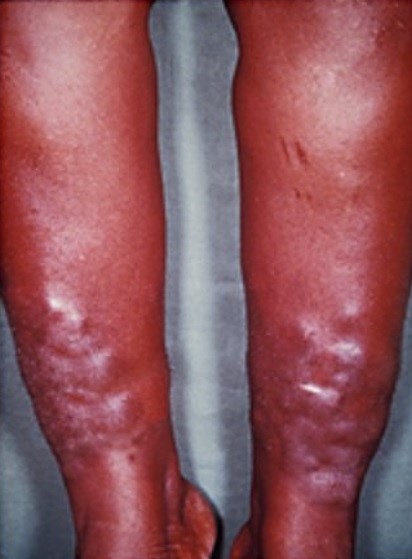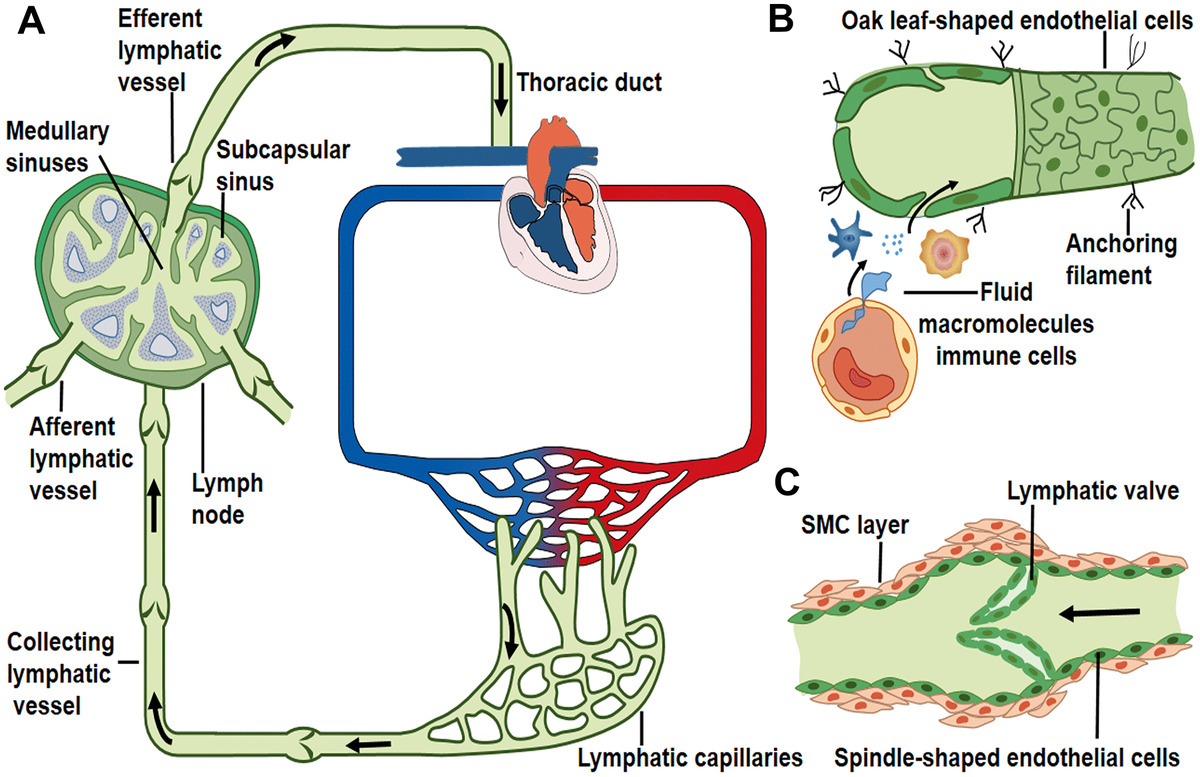Playlist
Show Playlist
Hide Playlist
Diseases of the Lymphatic System: Definition
-
Slides 14 VascularMedicine advanced.pdf
-
Reference List Vascular Medicine.pdf
-
Download Lecture Overview
00:01
Welcome back to the Advanced Vascular Medicine
program.
00:06
This is the last lecture in this series. And
we are going to be considering the lymphatic
system in this unit.
00:15
First we’ll as always talk about definitions,
particularly the various components of the
lymphatic system. We’ll talk also something
about the diseases: malformations, production
of edema and even massive edema known as
elephantiasis, which is quite rare and very,
very troublesome for patients.
00:37
We’ll also talk somewhat about the function
of the lymphatic system.
00:43
So the major function of the lymphatic system
is to move fluid in one direction from the
tissues to large veins back into the circulatory
system.
00:56
The lymphatic system is extensive throughout
the body. It drains the body’s interstitial
fluid via small lymph vessels or lymph capillaries.
And they eventually drain into the thoracic
venous system either through the thoracic
duct or the right lymphatic duct.
01:20
Now occasionally proteins or cell debris or
even bacteria will work their way out into
the tissues and then they’re also drained
by the lymph system because they cannot re-enter
the blood vessel themselves. So the lymph
system also is a defence system particularly
against bacteria. And we’re going to go
over this in much greater detail as we go
along.
01:46
The components of the system are numerous.
First of all, you have the very small lymph
vessels in the tissues that are picking up
fluid that leaks out of the capillaries. This
becomes progressively larger vessels. Eventually,
it connects up with the lymph nodes, which
are part of the lymphatic system and in particular
the lymph nodes that lie in the neck – the
cervical spinal (neck) regions as well as
along the face and the jaw.
02:15
Interestingly, most people don’t realize
this but the tonsils are actually lymphatic
tissue and they also help to control pathogens
– that is bacteria – that might be ingested
when you’re swallowing.
02:31
So let’s talk about each component of the
lymph system.
02:35
It starts out in the tissues with little tiny,
thin-walled, valved structures. And again
you want valves just like in the veins to
keep the fluid moving in one direction – that
is back towards the chest and into the venous
system so that the fluid is returned to the
cardiovascular system.
02:58
There’s an extensive network of these little
tiny vessels and, as they progress from the
most remote area in the tissues back into
the more proximal areas, they get bigger,
they get thicker-walled and so forth. And
we’re going to show examples of that in
a moment.
03:17
But the end capillary ones – the capillary
lymphatics that are in intimate contact with
the capillaries – are very, very tiny often
just a one single cell thick. And they are
a major complement to the cardiovascular system.
03:34
Their major roles are two: one is to remove
tissue fluid that leaks out of the capillaries
and return that fluid to the cardiovascular
system. And the other is defence against pathogens
– against particularly bacteria. And we’ll
talk about both of these functions as we go
along here.
About the Lecture
The lecture Diseases of the Lymphatic System: Definition by Joseph Alpert, MD is from the course Diseases of the Lymphatic System.
Included Quiz Questions
Which of the following is NOT a function of the lymphatic system?
- Maintaining sodium balance.
- Tissue drainage.
- Moving fluid towards the chest.
- Maintaining hydrostatic pressure.
- Providing immunity.
Which of the following is a functional adaptation of the lymphatic vessel to ensure unidirectional flow of blood?
- Valves to move fluid along.
- Capillary action to move fluids.
- Negative pressure from gravity.
- Muscle layer to pulsate blood.
- Muscle layer to create negative pressure.
Customer reviews
5,0 of 5 stars
| 5 Stars |
|
5 |
| 4 Stars |
|
0 |
| 3 Stars |
|
0 |
| 2 Stars |
|
0 |
| 1 Star |
|
0 |





